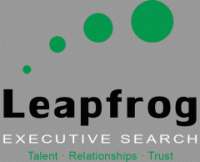Brands, Risks, and Dragons
Category : 2019
Innovation and re-invention are inherently risk-driven propositions. Taking an organization, or yourself from where you are to where you want (or need) to be demands valuing ambiguity, a level of comfort with the unknown, and embracing the unavoidable risk woven into every change. The turnover of companies on the Fortune 500 list over the past decade underscores that managing a brand from a posture of protection rather than expansion is a proven path to obsolescence.
Medieval cartographers made a practice of including illustrations of mythological creatures like dragons and sea monsters on the uncharted areas of maps-especially locations far out to sea. The perils were unknown, and the risks were great, so early map-makers labeled these alien places with the characteristic phrase, “here be dragons.”
If you aren’t embracing the dragons of risk with your brand you aren’t building your brand. By avoiding risk, you face a greater probability of becoming stagnant and irrelevant in the circle in which you operate. Whether an enterprise or an individual, if history is any indication, markets and market influencers are far more understanding of a brand that grapples with evolution and reinvention than they are of a brand that remains safely cocooned in a world of sterile self-protection.
No stranger to embracing if not pursuing risk, Elon Musk grabbed fate by the throat when introducing his electric Cybertruck to the market. Musk knows a brand doesn’t get noticed by presenting the expected, promoting the mundane, and promising staid predictability. During the introduction, the vehicle withstood a sledgehammer to the body and guests watched a slow-motion video of a bullet bouncing off the exterior as well. Musk’s’ effort to demonstrate the truck’s shatter-proof glass resulted in glass shattering onto the seats and egg trying – but failing – to land on Elon’s face. The unplanned mishap did little to deter excitement at the event. The brand-builder took a risk and the market largely applauded with approval.
On a broader scale, Forrester’s recently-released research titled The Future of Organizations underscores the market demand for brands that move beyond protection to innovation noting that, “. . . in today’s customer-led and disruption-rich market, most organizations are proving to be slow, rigid, and culturally tone-deaf. Designed on the principles of stability, accountability, and control, they protect entrenched politics and create hard-walled, politically laden silos, long decision cycles, and disjointed customer experiences that stymie change – and frustrate customers.”
As you plan for 2020, allotting time to calculate some well-planned risks is a prudent investment. Perhaps it’s time for a change in industry. Maybe you should consider a move to a division or team where you aren’t well-known, and you don’t understand that part of the business well. The greatest risk you might take could be choosing to interact with your colleagues with more candor and engage in the conflict that will help you lead your part of the organization to new levels of productivity and profitability.
Dragons in uncharted waters are no reason to stay in port. As William Shedd wisely reminded us, “A ship in harbor is safe, but that is not what ships are built for.”
